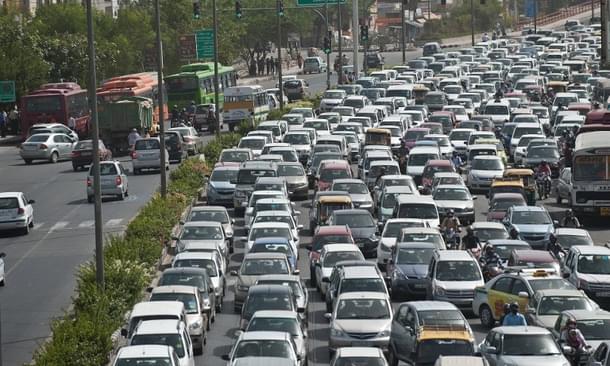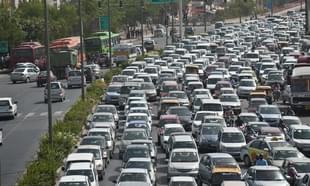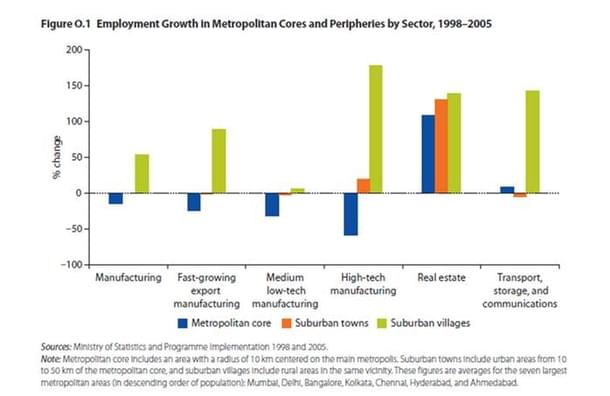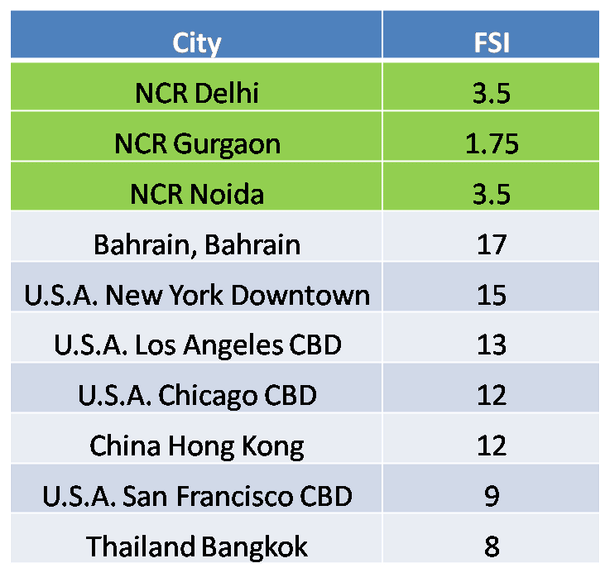Books
Alternative Solutions To Delhi’s Pollution Problems
Shreyas Bharadwaj
Apr 26, 2016, 01:43 PM | Updated 01:43 PM IST
Save & read from anywhere!
Bookmark stories for easy access on any device or the Swarajya app.


Over the past few days, we have seen the infamous Odd Even policy transform from one aimed at decreasing pollution to one which decreases road congestion for those residents of Delhi who are lucky enough to have two cars. Critics rightly point out that this experiment would have a negligible impact on both PM 10 and the more dangerous PM 2.5 emissions (PM denotes Particulate Matter) and demand actual solutions instead of media management. The supporters of the Delhi government promptly accuse these critics of everything from endangering the lives of children to being on the payroll of BJP.
I will refrain from further commenting on why Odd Even isn’t sensible public policy as I know that the aamaadmi will realize it on their own sometime soon. (I still am not sure about the Lutyensaadmi though). Here are the solutions which I suggest - (Most of these are solutions not already stressed on by prominent commentators like Anand Ranganathan)
1. Upgrading Traffic Management Systems and bringing in private participation for traffic management.
Vehicular Pollution is exacerbated by bumper to bumper traffic and huge waiting times at traffic signals. There is a need to upgrade traffic management systems and if need be (there usually is such a need) hire private contractors to make the movement of traffic in and around NCR as smooth as possible. An SPV (Special Purpose Vehicle) for this purpose would be an appropriate way to go about this. You might think that I am using buzz words here but I genuinely believe that there is space for big data analytics.
2. Adopt the changed framework of the Motor Vehicles Act announced in the Union Budget of 2016.
A functioning public transport system not only reduces the amount of air pollution in a city but also acts as a huge boon for the poor and middle class who can now opt for jobs farther from their homes and save costs on their daily commutes. The NDA government surprised everyone by announcing the deregulation of this sector in the 2016 budget.
In the spirit of federalism, states have been a given the final say on the adoption of this new legal framework. The state government should move swiftly to adopt this framework as soon as the necessary amendments are passed by the parliament. The Union Government also has the option to make Public Transport reform a condition for future JNNURM, Smart Cities and Housing For All by 2022 Mission funds. Governments need to realize that they are just not cut out for the nitty gritty of managing an efficient and profitable transport company. They aren’t so today and no matter what plan they have, they won’t be so in the future.
3. Stop harassment of app-based travel and other forms of last mile public transport
Car ownership increases the number of miles traveled for an individual. The presence and bigger network of apps like Uber and Ola combined with a well functioning public transport system reduces the incentive for car ownership and also eases up congestion due to parking spaces decreasing the width of our roads. The harassment of such organizations by the state government after the rape incident was nothing more than a headline management exercise which not only worked to the detriment of consumers but also of the aam junta due to increased congestion and pollution.
The newly announced ban on surge pricing is downright foolish given that the Delhi government’s intent is to reduce pollution in the city. This in combination with other variants of regulatory torture might badly impact the profitability of such app-based services which in turn will hinder larger deployment and greater coverage area.
Another important issue which the Delhi government seems to forget is the predicted reduction in car ownership due to such apps. A new study shows that users of such services are not that keen to buy cars anymore. Elsewhere, a year-long study is underway in UC Berkely to establish the same using data on actual purchases. Another study which measured car share programs and its effect on car ownership and long term travel demand showed how 29 percent of car owners had ditched one or more cars within four years of the introduction of a car share program in the San Francisco Bay Area. Higher car ownership has long been known to cause increase in travel demand and thus lead to higher levels of pollution.
4. Move away from biomass cooking and diesel gensets
A study says that almost one-fourths of total emissions of PM 2.5 emissions in our nation come from cooking using biomass. A lot many other studies point towards the same direction. In Delhi, 12 percent of total PM 2.5 emissions is from domestic fuel burning.
Diesel Gen-sets emit about six percent of total NOx emissions (remember all the marriages that happened in Delhi over the past few months?) This can be reduced to a great extent if governments-Centre and State actively support Piped Natural Gas (PNG) for domestic households and have stable electricity supply. All levels of government need to actively reduce hindrances in the way of PNG expansion in New Delhi. For the sake of Delhi’s future, Arvind Kejriwal needs to drop his opposition to more pricing power for electricity distribution companies in his state.
In this area, there are interesting parallels between today’s Delhi and London of the 1950s. London in the 50s had many instances of hysteria over the issue of pollution. One of the prime contributors to winter emissions in 1950s London was domestic heating systems which burnt coal. What solved the problem was the adoption of PNG (a cheaper alternative and better alternative to coal) by London’s residents. They thankfully had a less imaginative chief executive who did not impose Odd-Even on them.
5. Replace anti-density urban policies
Increasing suburbanization due to anti-height and thus anti-density policies of most cities including Delhi is increasing the commute times to work for many middle class urban citizens (car owners). This is also pushing a premature suburbanization of jobs in all kinds of sectors. This loss of density is causing workers to travel more for their jobs and/or travel more as a part of their jobs. The premature suburbanization of jobs is surprisingly across the board as shown in the graph below (World Bank, 2013)

More data pointing to suburbanization of both jobs (industries) and the resulting suburbanization of residences in Delhi is in the IIT Kanpur Report to the Supreme Court which shows high levels of PM 2.5 and PM 10 in Ghaziabad, Noida and Faridabad.
The solution is not asking them to shut shop. Suburbanization leads to them escaping whatever little monitoring they would be subjected to if they were in Delhi. The solution lies in doing away with our highly restrictive zoning regulations and replacing it with an ultra lite version of the same. Our Malthusian attitude towards density in cities needs to be cast away and we need to embrace taller, more enduring and thus better buildings. For this, the Delhi Government needs to change the laughably low Floor Area Ratio (FAR) limits and the Central Government needs to encourage Haryana and Uttar Pradesh to do the same.
Here is a glimpse of Delhi’s FAR/FSI ratios in comparison with other global cities.

Lower density leads to higher average commute times and distances. Moreover, urban sprawls (most Indian cities are sprawls) as Edward Glaeser has shown, consume much higher energy (domestic and transport) than dense agglomerations. Denser cities are greener and have other benefits- more affordable housing, better functioning labor markets and high economic activity (more incomes). Indian cities are dense due to our high populations but our floor area per person is many a time lower than prison rooms in the west.
6. Address the problem of Land Acquisition
Rural Land Use regulations (Land Ceiling and Conversion requirements) and the Land Acquisition, Rehabilitation and Resettlement Act are preventing the fast development of peripheral infrastructure needed to properly re-route inter-state traffic- freight and normal which passes through New Delhi. Given the ideologies of those in power in Delhi state, I doubt if they would do anything to solve this problem. The NDA at the centre needs to encourage Uttar Pradesh, Haryana and Rajasthan to pass state laws on these subjects so that bureaucratic interference in Land Markets is minimal. For this, the Union government has Art 254(2) at it’s disposal. Land Ceiling acts and the LARR of 2013 prevent land acquisition. It’s high time we discard it. One can only hope Kejriwal does something in this regard.
An interesting point not usually mentioned in the hysteria is that the car’s predecessor as a mode of urban transport was horse pulled carriages. These horse pulled carriages used to be ‘green’ as they consumed no fossil fuels but the problem with them was that in the end of the day, their exercise of bodily functions ensured that dense cities like New York smelled intolerably and helped the spread of a lot of communicable diseases. The introduction of the car was welcomed by our earlier generations as something which would increase the quality of urban life. The car did do that job and then some. It is time to stop demonizing cars for headline management and take measures that will actually solve the problem. Treat the disease and not the symptom.
Shreyas Bharadwaj is a Hindutvawadi from Mysuru who is interested in writing about cities and public policy.





